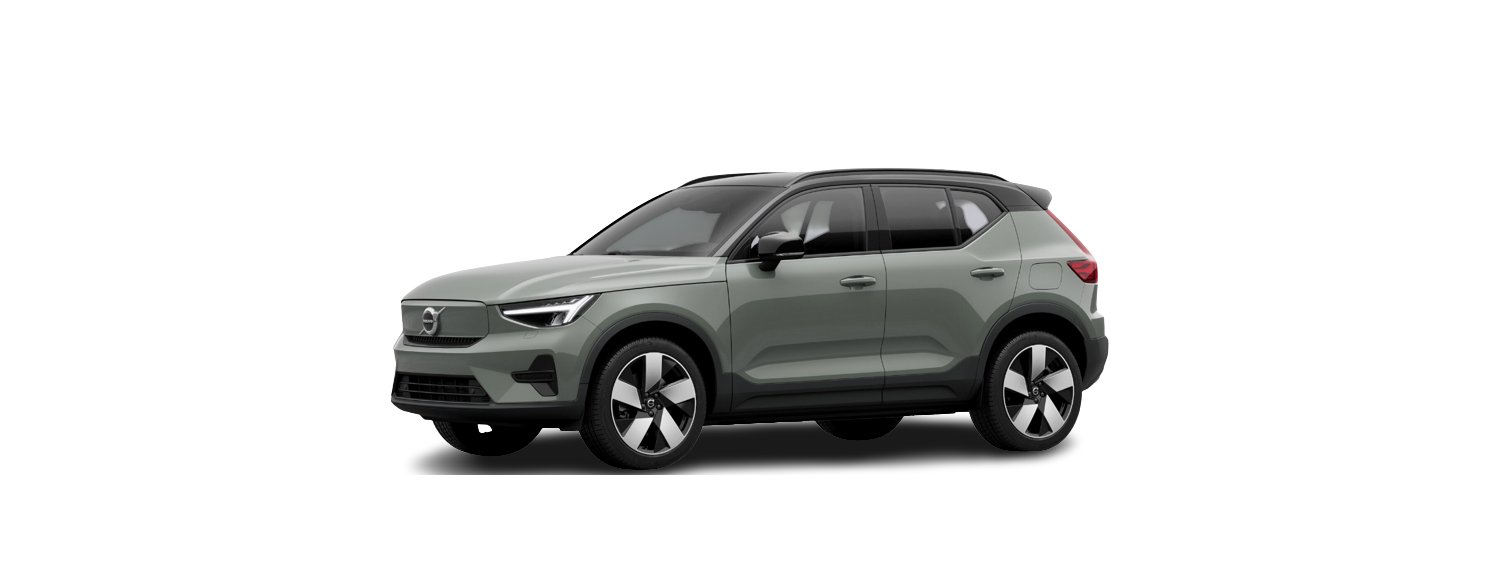2023 Volvo XC40 Recharge Plug-in Hybrid Exterior cleaning
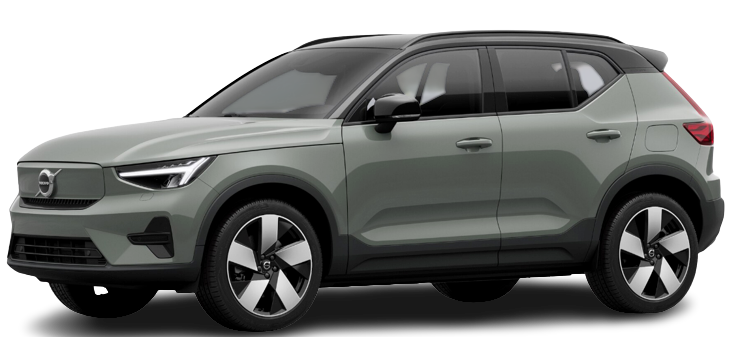
Cleaning the exterior lamps
Clean the exterior lamps, such as headlamps and rear lamps, with a soft and clean sponge together with mild soap and lukewarm water.
Temporary condensation on the inside of the lens in connection with cleaning is quite normal. All exterior lamps are designed to withstand this. Condensation is normally vented out from the lamp housing after the lamp has been illuminated for a while.
Do not rub with a dry sponge or rag as it may cause electric discharges that damage components in the lamp.
Cleaning the wiper blades
Asphalt, dust, and salt residue on wiper blades, as well as insects, ice, etc. on the windscreen, impair the service life of wiper blades.
When cleaning, set the wiper blades in the service position.
Wash the wiper blades and windscreen regularly with a lukewarm soap solution or car shampoo. Do not use any strong solvents.
Car paintwork
The most common types of paintwork damage are stone chips, scratches, and marks on the edges of wings, doors, and bumpers. To avoid the onset of rust, damaged paintwork should be rectified immediately.
Colour codes
Colour code
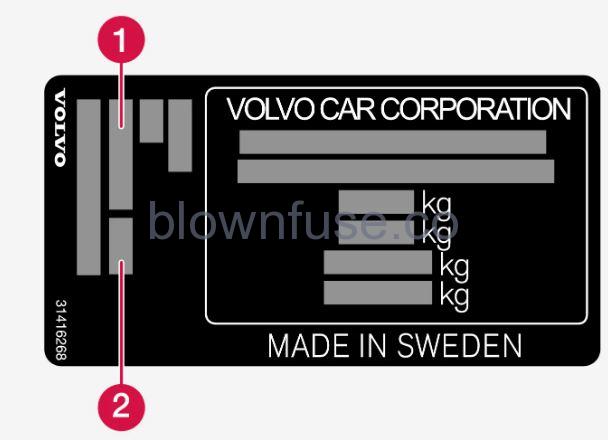 Exterior colour code
Exterior colour code- Any secondary exterior colour code
Touching up minor paintwork damage
To avoid the onset of rust, damaged paintwork should be rectified immediately.
When the paint is repaired the surface must be clean and dry. The temperature of the surface should be at least 15 °C (59 °F).
Materials that may be needed
- Primer – a special adhesive primer in a spray can is available for e.g. plastic-coated bumpers.
- Basecoat and clearcoat – available in spray cans or as touch-up pens/sticks.
- Masking tape.
- Fine sandpaper.
Applying touch-up paint to the damaged surface
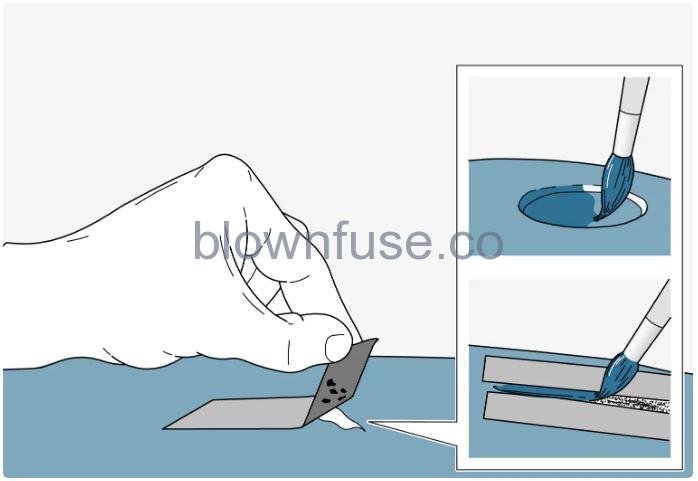
If the damage has not reached down to the metal, the touch-up paint can be applied directly after the surface has been cleaned.
- Apply a piece of masking tape over the damaged surface. Then remove the tape to remove any loose paint. If the damage is down to the metal, the use of a primer is appropriate. In the event of damage to a plastic surface, an adhesive primer should be used to give better results – spray into the lid of the spray can and brush on thinly.
- Before painting, gentle polishing using a very fine abrasive cloth may be carried out locally if required (e.g. if there are any uneven edges). The surface is thoroughly cleaned (grease and salt should be removed) and left to dry.
- Stir the primer well and apply using a fine brush, a matchstick or similar. Finish off with a basecoat and clearcoat once the primer has dried.
For scratches, implement the same procedure but mask around the damaged area to protect the undamaged paintwork. - Touch-up pens and spray paints for touching up paintwork are available from Volvo dealers.
Note
If the stone chip has not penetrated down to the meal and an undamaged layer of paint remains in place, fill in with a base coat and clear coat as soon as the surface has been cleaned.
Cleaning the exterior
Rustproofing
Inspection and maintenance
The car’s anti-corrosion protection normally requires no maintenance, but a good way to reduce the risk of corrosion is to keep the car clean. Strong alkaline or acidic cleaning solutions must be avoided on glossy trim components. Any stone chips should be rectified as soon as they are discovered.
Automatic car wash
An automatic car wash may be a quick and easy way to clean the car, but will not reach all the parts of the car that need to be cleaned on a regular basis. Volvo recommends supplementing automatic car washing with hand washing.
Avoid washing a brand new car in an automatic car wash during the first few months. This would allow the paintwork to fully harden.
Preparations before washing
In an automatic car wash where the car is pulled through the car wash, it is important to switch off functions that prevent the car from rolling freely.
- Secure or remove protruding exterior parts such as retrofitted auxiliary lamps and antennas.
- Make sure that the automatic rain sensor function is deactivated. The windscreen wipers must be switched off the whole time the car is being washed to avoid the risk of damage.
- Deactivate the automatic braking at the standstill function using the button on the tunnel console.
- Deactivate the automatic activation of the parking brake function via settings in the centre display.
During washing
Keep the windows, doors and tailgate closed the whole time the car is being washed. If the car is equipped with keyless locking and unlocking: Take out the key and store it openly in the front part of the car while the car is being washed. This minimises the risk of opening the tailgate unintentionally by pressing a button, or that the key is incorrectly detected outside the car. Drive into the car wash and stop at the designated location. Select gear position N. Set the car in ignition position 0 by holding the start button depressed for several seconds. The engine is switched off, and at the same time, the car can roll freely. The car travels through the automatic car wash. Keep the seatbelt fastened the whole time the car is being washed. Do not forget to restore the adjustments that were made before the car wash.
After washing
Press the brake pedal gently for a short time while driving after the brake linings have been exposed to the wetness. This heats the brakes with friction so that they dry more quickly and reduces the risk of corrosion.
Warning
Always test the foot brake and parking brake after washing the car in order to restore their function.
Cleaning exterior plastic, rubber and trim components
The car should be washed as soon as it becomes dirty. The longer the car is left dirty, the more difficult it will be to get it completely clean and there is a risk of scratching the paintwork. Use car shampoo that is recommended by Volvo. A special cleaning agent available from Volvo dealers is recommended for the cleaning and care of coloured plastic parts, rubber and trim components, e.g. glossy trim mouldings. When using such a cleaning agent the instructions must be followed carefully. Avoid washing the car with detergent with a pH value below 3.5 or above 11.5. This can cause discolouration of anodised aluminium components, as illustrated. We advise against the use of abrasive polishing agents, as illustrated.
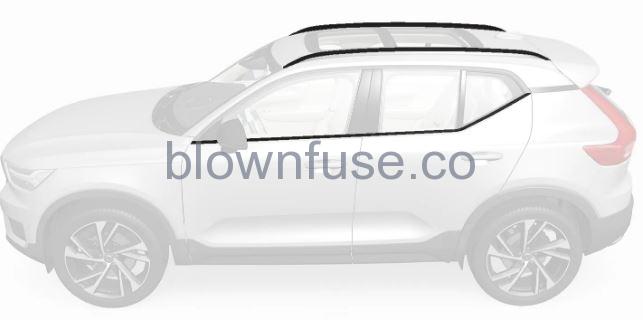 Parts should be washed using a cleaning agent with a pH value between 3.5 and 11.5.
Parts should be washed using a cleaning agent with a pH value between 3.5 and 11.5.
- Avoid waxing and polishing on plastic and rubber.
- When using degreasing on plastic and rubber, only rub with light pressure if it is necessary. Use a soft washing sponge.
- Polishing glossy trim mouldings could wear away or damage the glossy surface layer.
- A polishing agent that contains abrasive must not be used.
Cleaning wheel rims
Handwashing
Important points to remember when handwashing the car
- Avoid washing the car in direct sunlight. This can cause the detergent or wax to dry and have an abrasive effect.
- Remove bird droppings from the paintwork as soon as possible. They contain substances that damage and discolour paintwork very quickly. For example, use soft paper or a sponge soaked in plenty of water. An authorised Volvo workshop is recommended for the removal of any discolouration.
- Wash the underbody, including wheel housings and bumpers.
- Rinse the entire car until the dissolved dirt has been removed so as to reduce the risk of scratches from washing. Do not spray directly onto the locks.
- If necessary, use a cold degreasing agent on very dirty surfaces. Note that in this case, the surfaces must not be hot from the sun.
- Wash using a sponge, car shampoo and plenty of lukewarm water. Ensure that the sponge is dirt-free. Dirt on the sponge may cause you to scratch the car during washing.
- Clean the wiper blades with a lukewarm soap solution or car shampoo.
- Dry the car using a clean, soft chamois or a water scraper. If you avoid allowing drops of water to dry in strong sunlight, you reduce the risk of water drying stains which may need to be polished out.
- After the car has been washed, tar from asphalt may remain. Use tar remover that is recommended by Volvo to get rid of the last spots.
Dirty headlamps have impaired functionality. Clean them regularly, e.g. when refuelling.
Do not use any corrosive cleaning agents but use water and a non-scratching sponge instead. See separate section for more information.
Outside lighting such as headlamps and rear lamps may temporarily have condensation on the inside of the lens. This is normal, all exterior lighting is designed to withstand this. Condensation is normally vented out of the lamp housing when the lamp has been switched on for a time.
- Make sure that the panoramic roof and sun visor is closed before washing the car.
- Never use a polishing agent with abrasive properties on the panoramic roof.
- Never use wax on the rubber mouldings around the panoramic roof.
High-pressure washing
The car should be washed as soon as it becomes dirty. The longer the car is left dirty, the more difficult it will be to get it completely clean and there is a risk of scratching the paintwork. Wash the car in a car wash with an oil separator. Use car shampoo that is recommended by Volvo. When using high-pressure washing, use sweeping movements and make sure that the nozzle does not come closer than 30 cm (13 in.) to the surface of the car. Do not spray directly onto the locks or within the fuel filler flap and charging hatch.
Do not rinse water hotter than 60 °C onto the exterior lamps, such as headlamps and rear lamps. See separate section for more information.
Polishing and waxing
- Wash and dry the car thoroughly before you begin polishing or waxing. Clean off asphalt and tar stains using tar remover or white spirit. More stubborn stains can be removed using a fine rubbing paste designed for car paintwork. Use the cleaning agent recommended by Volvo.
- Polish first with a polish and then wax with liquid or solid wax. Follow the instructions on the packaging carefully. Many preparations contain both polish and wax.
Never polish or wax any matt details on the car. This can destroy the matt effect and give the surface a permanent shine.
- Avoid waxing and polishing on plastic and rubber.
- When using degreasing on plastic and rubber, only rub with light pressure if it is necessary. Use a soft washing sponge.
- Polishing glossy trim mouldings could wear away or damage the glossy surface layer.
- A polishing agent that contains abrasive must not be used.
Use the cleaning agent recommended by Volvo. Other treatments such as preserving, sealing, protection, lustre sealing or similar could damage the paintwork. Paintwork damage caused by such treatments is not covered by the Volvo warranty.
